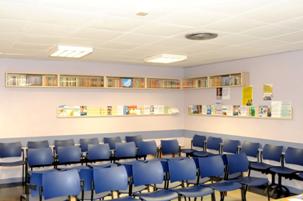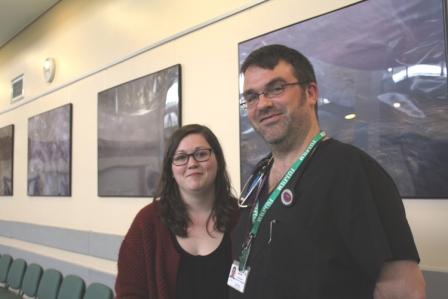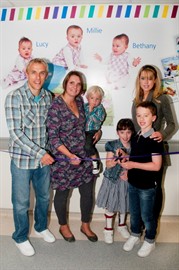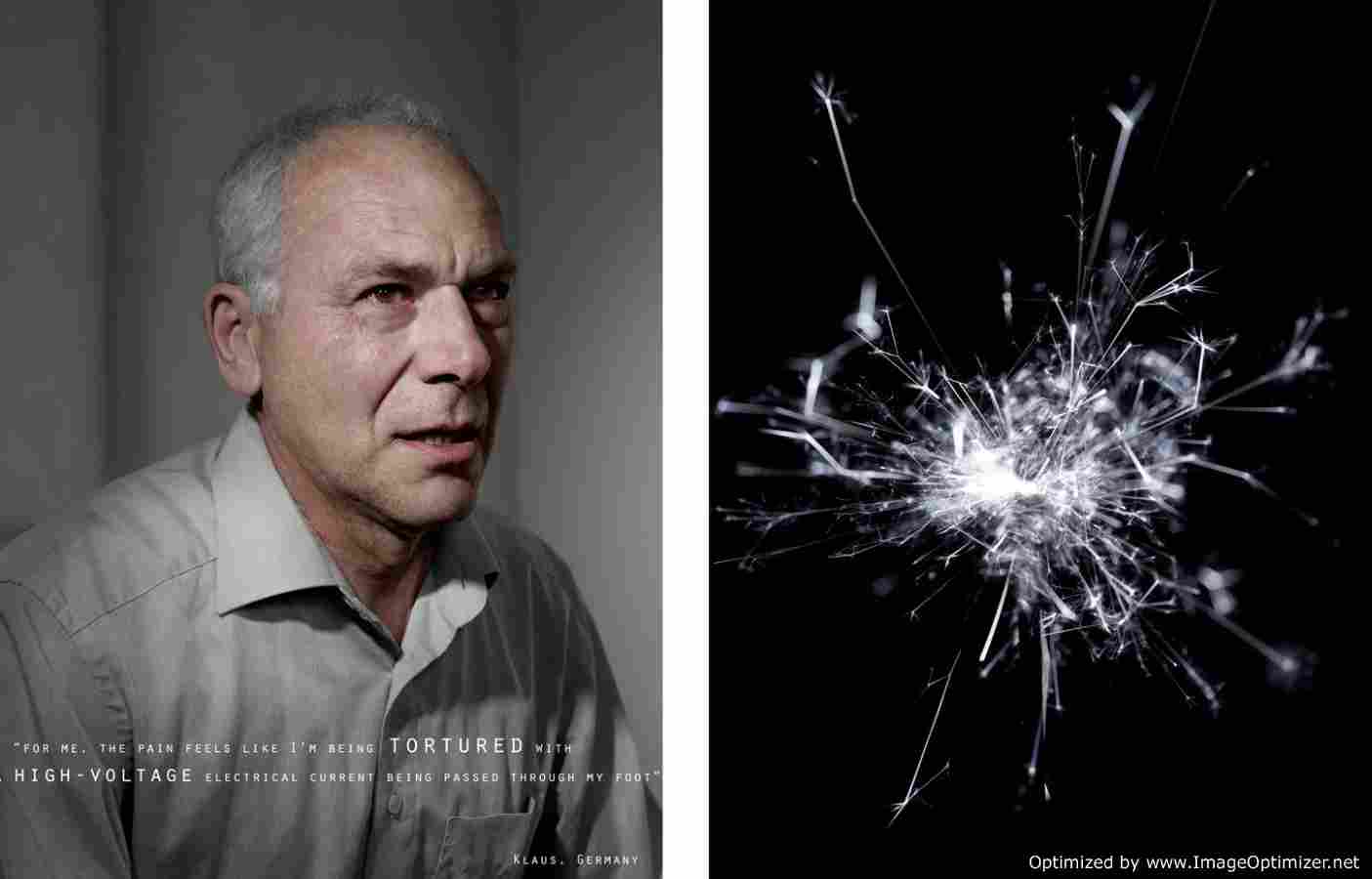Arts provide a boost at Liverpool hospital
TWO recent arts projects have helped to improve the patient environment at The Royal Liverpool University Hospital. Working with artist, Andy McKeown, patients and staff have contributed more than 100 photographs which will be displayed in sequence as part of a digital installation. The artwork will be added to and refreshed on a rolling basis to give visitors, patients and staff something to look at when negotiating the corridors and wards. Artists have also created a new bookshelf made from entirely recycled materials with digital inserts, which now adorns the walls of the gastroenterology outpatients department. The digital videos have been created from ideas provided by patients.
Nicky Duirs, arts for health lead at the hospital, said: “The short video clips cover everything from sports to cookery and origami. The video screens are embedded within the bookcase and return to an image of books between the clips to give the impression that you are opening the books to find things out while you wait for your appointment.”

E medic shows his support

AN A and E doctor from Wales has shown his support for arts in health by buying two works which were on show at Nevill Hall Hospital in Abergavenny. Dr David Caldicott, who works at the hospital, purchased two pieces by local artist, Rachael Cochrane, after they were displayed as part of an exhibition organised by Gwent Arts in Health. He said: “Art can have a profound impact on the morale of patients and staff. If it is not created with emotion, it has no chance of imparting emotion to the viewer and becomes more decoration than art. I would love to see more art on the walls of our departments.” Currently the hospital is displaying works by Alan Bateman in the outpatients department.
Mum gives something back

FAMILIES from Manchester whose children were born prematurely have worked with staff at Saint Mary's Hospital to improve the surroundings through the introduction of art. The idea was the brainchild of mother, Sue Emms, who spent time at the unit following the birth of her son, Dillon. She was keen to develop artwork that would not only provide a colourful welcome, but would also offer some words of comfort to other families.
She said: “The idea behind the project was to provide a piece of artwork that could help families navigate the unit and brighten it up. When you’re on the unit, you forget what is happening outside the four walls and I think it’s important for families to be given some hope. The artwork continues throughout the unit and finishes at the parent accommodation and as families then walk back out of the unit, they can read quotes from staff who work there.”
The power of poetry
THE power of poetry was used to entertain sick children when award-winning writer, Lemn Sissay MBE, performed at The Royal London Children's Hospital. Sissay, who has been working with young patients over the past six weeks in his role as the hospital's poet-in-residence, gave a special recital to mark National Poetry Day. He said: “In my own life, creativity helps the healing process and I wanted to share how reading and writing poetry can be both rewarding and helpful. Poetry is everywhere in life, even inside get well soon cards, but working with children in a hospital setting to create it has been an unreal experience. Whereas the body has its limitations, the imagination is limitless.” During his visit he recited a number of original poems before leading a workshop for young patients.
Rachel Louis, project manager for the hospital’s Vital Arts programme, said: “Poetry can instantly transport people to another place or time and is a brilliant distraction that allows patients to focus on something positive instead of their illness. Numerous studies suggest that art interventions can reduce pain and anxiety levels and help speed patient recovery times.” Following the event, poems written by young patients will be posted across wards and public areas at the new hospital when it opens next February.
Lullabies soothe newborns
A UNIQUE project is running at The Royal London Hospital with local musicians visiting new mothers and composing lullabies for their babies, with the music helping mother and baby to bond. The project is a partnership between the Vital Arts department at Barts and The London NHS Trust and Spitalfields Music. Parents decide on the composition with the musicians and are then given a songbook and CD to continue with the concept at home. Christine Wood, baby-friendly co-ordinator at the Royal London, said: "When musicians come onto the ward, there is an immediate, perceptible change in atmosphere; it becomes quieter, calmer and everyone seems at ease."
Mental health awareness through art
POSTCARDS designed by Bradford people experiencing mental health problems have gone on show to mark World Mental Health Day. Bradford District Care Trust is showcasing the creativity of service users who designed postcards in response to the question "Can you imagine how I feel?" Demonstrating how art can have a positive role in the recovery of people with mental health problems, the exhibition featured a wide range of imaginative postcards that have been developed using paint, print, mixed media, drawings and collages. Carl Challinor, event co-organiser, said: "Its testament to service users talents, creativity and dedication that such a fantastic collection of artwork has been created for the exhibition. The artwork fascinates, confronts and educates through its powerful content. I believe that everyone viewing the work will remember it for a long time."
Photos show patients pain

AN INTERNATIONAL exhibition is currently touring major European cities, revealing the untold stories of peripheral neuropathic pain (PNP) patients. The Pain Within is a show of portraits and images by award-winning photographer, Alex Telfer, based on the lives of patients who suffer from the condition, which affects between 3%-8% of the population. Telfer said: "My aim for this exhibition was to allow visitors a glimpse into the lives of patients so that they could understand their experience and gain an insight into living with this type of chronic pain. I have tried to capture not just how these people look, but also how they perceive their pain and how they feel about it.” He added that, for many of the patients he spoke to, art was a way of escaping from the day-to-day pain.
Ken Jones of exhibition sponsor, Astellas Pharma Europe, said: "PNP is a devastating condition which is made all the more difficult to bear for those who live with it by the fact that it is not well-known or understood. We hope that, by making the invisible visible, this exhibition will help to change that and will play a part in creating an environment in which the needs of patients are more widely recognised." The exhibition opened last week in Hamburg, Germany, and will now continue its tour around Europe.




